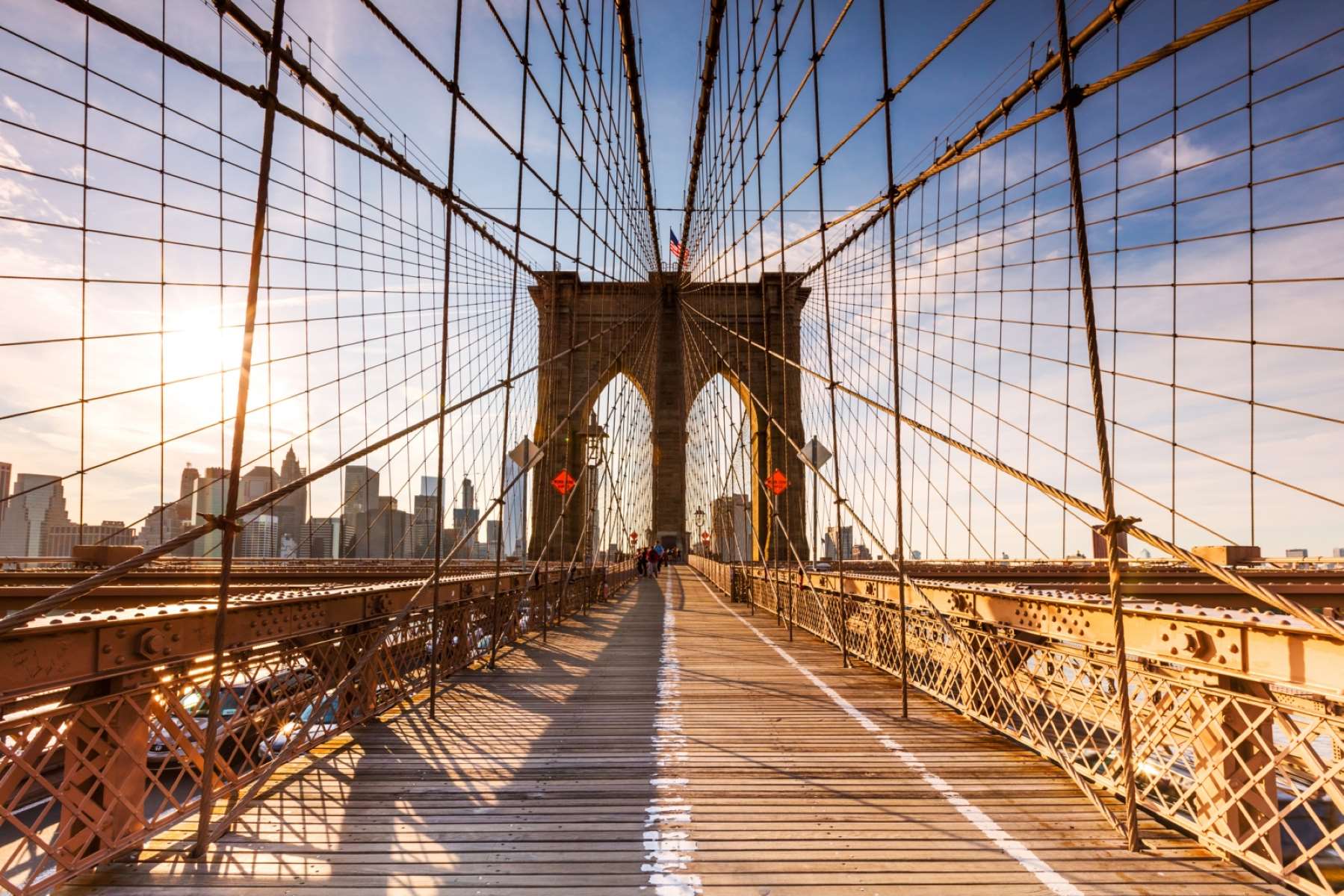Secrets Behind The Brooklyn Bridge’s History

Have you ever wondered about the Brooklyn Bridge's history? This iconic structure, connecting Manhattan and Brooklyn, has fascinated people for over a century. Completed in 1883, it was the longest suspension bridge in the world at the time. Designed by John A. Roebling, the bridge faced numerous challenges during its construction, including Roebling's untimely death and his son Washington Roebling taking over the project. Despite these obstacles, the bridge stands as a testament to human ingenuity and perseverance. Today, it remains a vital part of New York City's landscape, attracting millions of visitors each year. Let's dive into the captivating story behind this engineering marvel.
The Visionary Idea
The Brooklyn Bridge stands as a testament to human ingenuity and determination. Conceived in the 19th century, it was an ambitious project that aimed to connect Manhattan and Brooklyn. Let's dive into the fascinating history behind this iconic structure.
John A. Roebling's Dream
John A. Roebling, a German immigrant and civil engineer, envisioned a bridge that would span the East River. His innovative design included steel cables, a novel idea at the time, which would provide the necessary strength and flexibility.Tragic Beginnings
Roebling's dream faced a tragic setback when he died from an accident during the bridge's early construction phase. His son, Washington Roebling, took over the project, determined to see his father's vision come to life.
Engineering Marvels
Building the Brooklyn Bridge required overcoming numerous engineering challenges. The techniques and materials used were groundbreaking for their time.
Caisson Foundations
To support the massive towers, workers used caissons—watertight chambers sunk to the riverbed. Laborers worked in these caissons under high pressure, a dangerous task that led to many cases of decompression sickness, known as "the bends."Steel Cables
The bridge's strength comes from its steel cables, a revolutionary material choice. Each cable contains thousands of individual wires, meticulously spun together to ensure durability and support.
Overcoming Adversity
The construction of the Brooklyn Bridge wasn't without its share of hardships. From health issues to financial woes, the project faced numerous obstacles.
Washington Roebling's Illness
Washington Roebling fell ill with caisson disease, leaving him bedridden. Despite his condition, he continued to oversee the project from his apartment, using a telescope to monitor progress and sending instructions through his wife, Emily.Emily Roebling's Role
Emily Roebling played a crucial role in the bridge's completion. She acted as a liaison between her husband and the engineers, learning advanced mathematics and engineering principles to effectively communicate his directives.
Grand Opening
After years of hard work and perseverance, the Brooklyn Bridge finally opened to the public. Its inauguration was a momentous occasion, celebrated by thousands.
May 24, 1883
The bridge opened on May 24, 1883, with a grand ceremony attended by President Chester A. Arthur and New York Governor Grover Cleveland. The event marked the culmination of over a decade of relentless effort.First Day's Traffic
On its first day, the bridge saw over 150,000 people cross it, a testament to its significance and the public's excitement. Pedestrians, horse-drawn carriages, and even a herd of elephants tested its strength.
Legacy and Impact
The Brooklyn Bridge has left an indelible mark on New York City and the world. Its influence extends beyond its function as a transportation link.
Architectural Icon
The bridge's Gothic-style towers and sweeping cables have made it an architectural icon. It has inspired countless artists, photographers, and filmmakers, becoming a symbol of New York City itself.Engineering Influence
The techniques and materials used in the bridge's construction set new standards for engineering. It paved the way for future suspension bridges, influencing designs worldwide.Cultural Significance
Beyond its practical use, the Brooklyn Bridge holds cultural significance. It represents the spirit of innovation and resilience, embodying the American dream of overcoming adversity to achieve greatness.
Brooklyn Bridge's Lasting Legacy
The Brooklyn Bridge stands as a symbol of innovation and resilience. Its construction, led by the Roebling family, showcased groundbreaking engineering techniques. The bridge not only connected Manhattan and Brooklyn but also brought communities closer. Over the years, it has witnessed countless historical events, becoming an integral part of New York City's identity. Walking across its span offers breathtaking views and a tangible connection to the past. The bridge's enduring presence reminds us of human ingenuity and the power of determination. Whether you're a history buff or just someone who appreciates architectural marvels, the Brooklyn Bridge continues to inspire. Its story is a testament to what can be achieved with vision and perseverance. Next time you're in New York, take a moment to appreciate this iconic structure and the rich history it represents.

